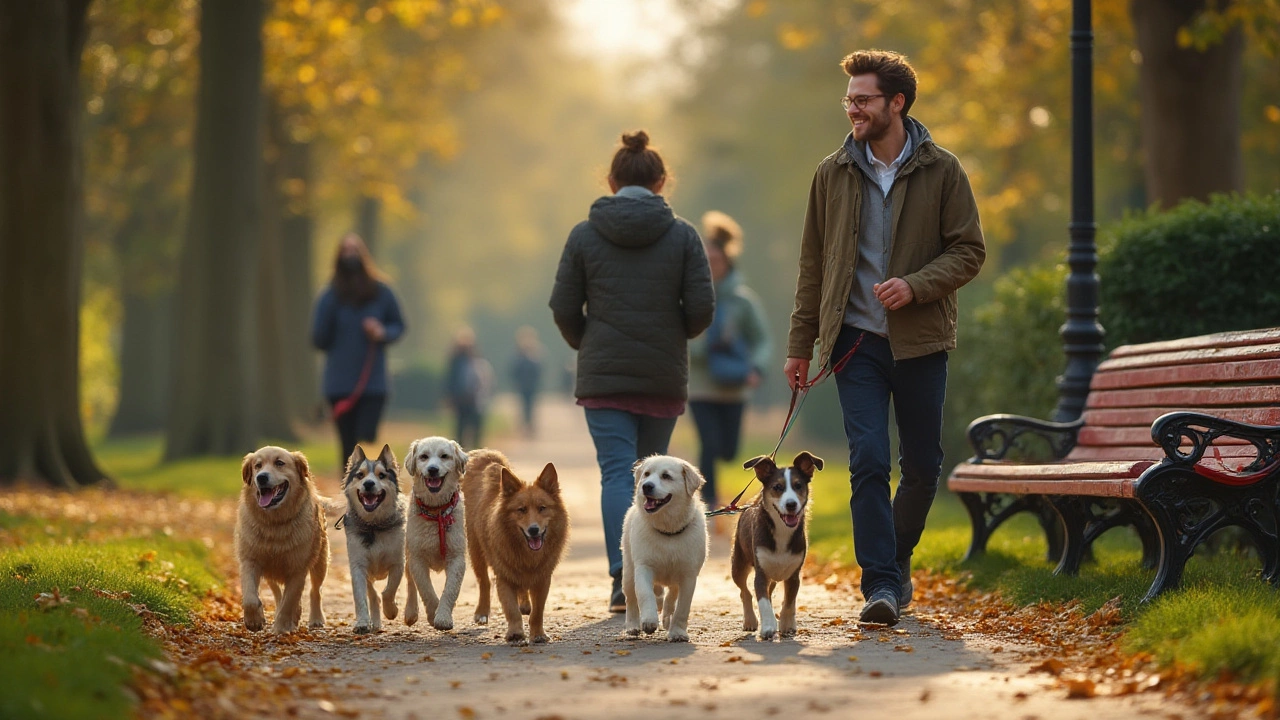Dog Walker Guide – How to Choose and Use a Dog Walking Service
Ever wonder why some owners swear by a professional dog walker while others stick to DIY walks? The truth is simple – a good walker can give your pup exercise, mental stimulation, and social time even when you’re swamped. That extra wiggle‑room in your schedule often means a happier, healthier dog and a calmer home.
What to Look for in a Dog Walker
First off, trust is everything. Ask for references, check reviews, and see if they’re insured and bonded. A reputable walker should be able to share their vaccination records for any dogs they handle and a clear liability policy. Next, watch their interaction style. Do they use gentle cues? Are they patient with nervous pups? A quick meet‑and‑greet can reveal a lot – watch how they greet your dog, if they let the pup sniff, and whether they respect your pet’s pace.
Experience matters too. Look for walkers who know basic commands, can handle multiple dogs safely, and understand breed‑specific quirks. If you have a reactive or senior dog, make sure the walker has dealt with similar cases before. Finally, set clear expectations: route length, frequency, and any special needs (like medication or water breaks). Written agreements help avoid misunderstandings down the line.
Keeping Walks Safe and Fun
Safety starts with the right gear. A sturdy, well‑fitted harness reduces strain on a dog’s neck, especially for breeds prone to tracheal issues. Reflective leashes are a bonus for early morning or evening walks. Your walker should carry waste bags, a water bottle, and a basic first‑aid kit – think bandages, antiseptic wipes, and a quick way to contact you.
Training cues during the walk keep things orderly. Simple commands like “easy,” “heel,” or “leave it” help manage distractions and keep other walkers (or cyclists) safe. If you notice your dog pulling or getting overly excited, ask the walker to work on loose‑leash walking or short, controlled sniff breaks. Those brief pauses let the dog explore scents without turning the walk into a marathon.
Pay attention to the route. A good walker will vary the path to keep the experience fresh – a park one day, a quiet residential street the next. Variety reduces boredom and builds confidence. If your area has dog‑friendly parks, ask the walker to incorporate off‑leash time where allowed, but only if your dog is reliably recalled.
Communication is key. Set up a quick daily check‑in via text or a photo update. Seeing your pup’s happy face after a walk gives you peace of mind and lets the walker know what’s working. If anything feels off – a sudden limp, a change in appetite, or signs of anxiety – let the walker know right away so they can adjust future walks.
In the end, a great dog walker is an extension of your own care routine. By vetting candidates, setting clear rules, and staying in the loop, you’ll give your dog the exercise they need and free up your own time. Happy walks mean happier dogs, and that’s a win for everyone.

Are Dog Walkers a Good Idea? Honest Pros, Cons & Expert Tips
Thinking about hiring a dog walker? We dig deep into the real pros, hidden cons, what to ask, and whether dog walking is a smart choice for your furry pal.
View more